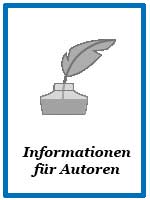
Sydowia Vol. 74 E-Book/S 153-161
Evaluation of agroforestry waste ...
Download-Artikel
Artikel Nr 2954
erschienen 30.08.2021
Preis 13,50 €
Lieferstatus 

Buchbeschreibung
In: Sydowia 74, (2021): 153-161; ISSN 0082-0598, DOI 10.12905/0380.sydowia74-2021-0153, Published online on August 30, 2021Evaluation of agroforestry waste for cultivation of wood ear mushroom (Auricularia polytricha) and its antimicrobial activity
Surya Prakash V.1, Savita Jandaik*, Sunita Chandel, Satish Kumar, Rajneesh Thakur, Rajender Singh Jarial & Kumud Jarial
Department of Plant Pathology, Dr Yaswant Singh Parmar University of Horticulture and Forestry Nauni, Solan (HP), India, 173230. ICAR-Directorate of Mushroom Research, Chambaghat, Solan (Himachal Pradesh), India Department of Plant Pathology, College of Horticulture and Forestry, Neri Hamirpur (HP), India
* e-mail: drsavitajandaik@gmail.com
Prakash V.S, Jandaik S., Chandel S., Kumar S., Thakur R., Jarial R.S. & Jarial K. (2021) Evaluation of agroforestry waste for cultivation of wood ear mushroom (Auricularia polytricha) and its antimicrobial activity. – Sydowia 74: 153–161.
Various agroforestry wastes viz., wheat straw, paddy straw, sugarcane bagasse and sawdust were assessed for the yield potential of Auricularia polytricha. Amongst different substrates used, yield and biological efficiency ranged between 194.33±4.50- 270.50±1.84 g and 64.78±1.50 – 90.17±0.61 %, respectively. Primordial initiation was observed 13 to 25 days after making the vertical slits on the bags in all the substrates tested. The yield of A. polytricha varied significantly with the type of grain spawn used for spawning wheat straw substrate. The overall biological efficiency was recorded highest on wheat grain spawned substrate. The minimum time for primordial initiation and maximum biological efficiency was observed on substrate spawned with wheat straw at the rate of 4 %. The fruit body extracts and cultural filtrate of A. polytricha showed promising antifungal activity against Alternaria alternata and Cercospora tageticola. Methanolic extract of fruit body showed better antifungal properties than aqueous fruit body extract against both the tested phytopathogenic fungi. Both the extracts (fruit body and mycelia) were also tested against human pathogenic bacteria. Fruit bodies extract of A. polytricha resulted in the maximum zone of inhibition (28.57±0.17 mm) against S. aureus, followed by (28.27±0.13 mm) zone of inhibition against the same bacteria by mycelia extract. MIC was 1.5 mg/ml against S. aureus, 2.5 mg/ml against Escherichia coli and Salmonella typhimurium and
1.25 mg/ml against Klebsiella pneumonia. Fruit body and mycelial extract of A. polytricha showed promising antifungal activity against phytopathogenic fungi and antibacterial activity against human pathogenic bacteria that warrant further studies as a future Auricularia based biological control products against plant pathogenic fungi and dietary supplement to improve health.
Keywords: Auricularia, growing substrate, spawn, sporophores, poisoned food technique.





